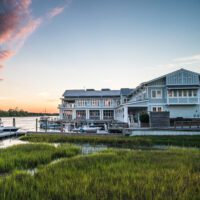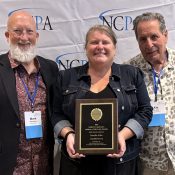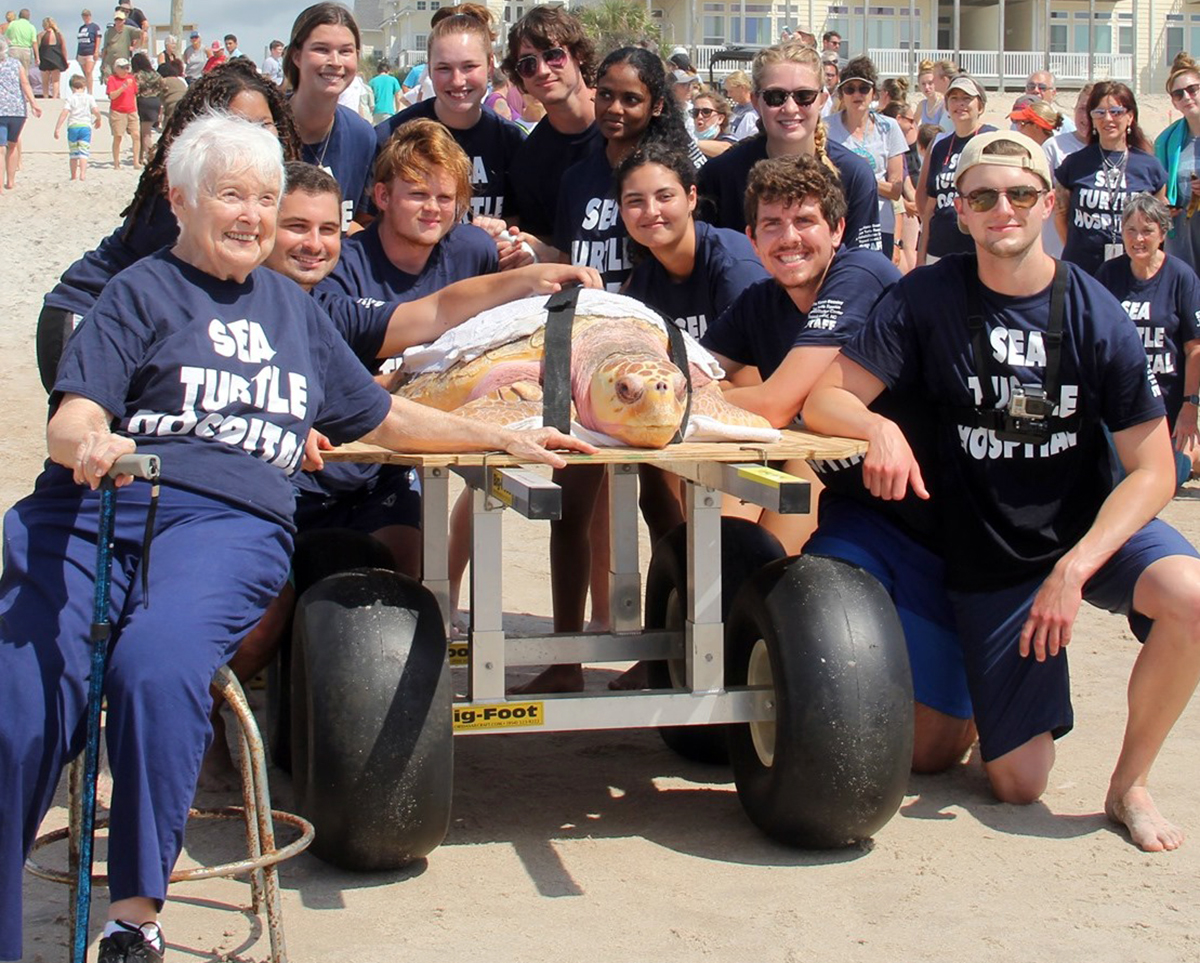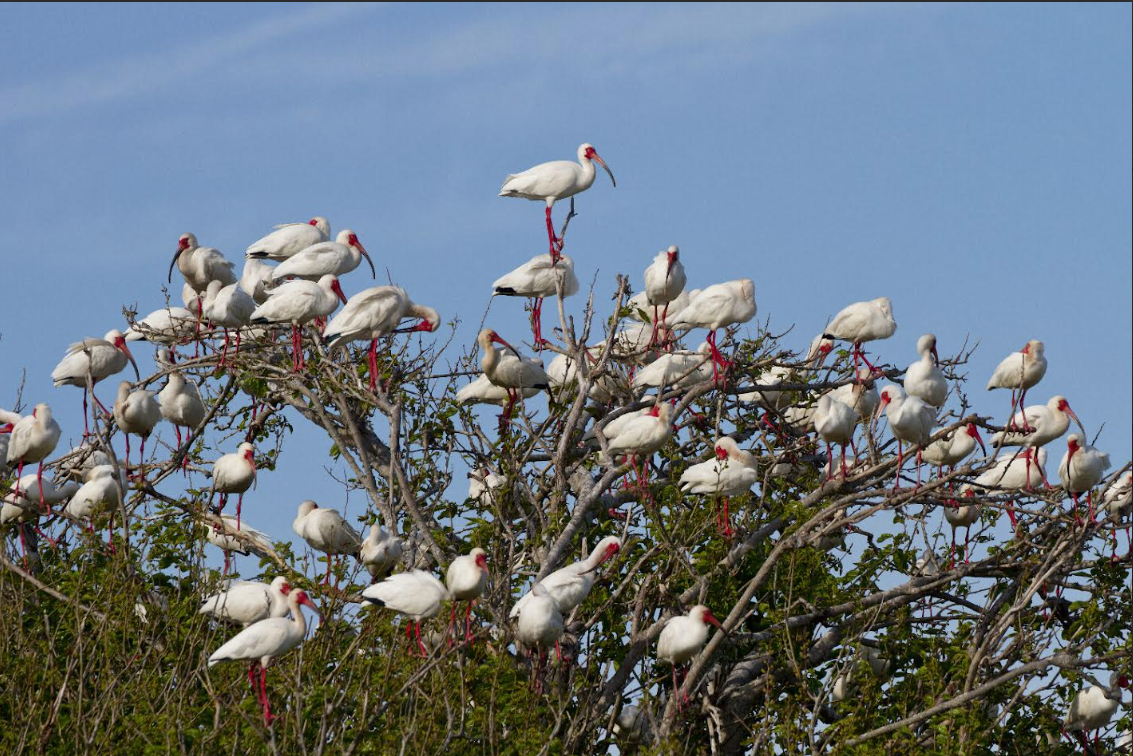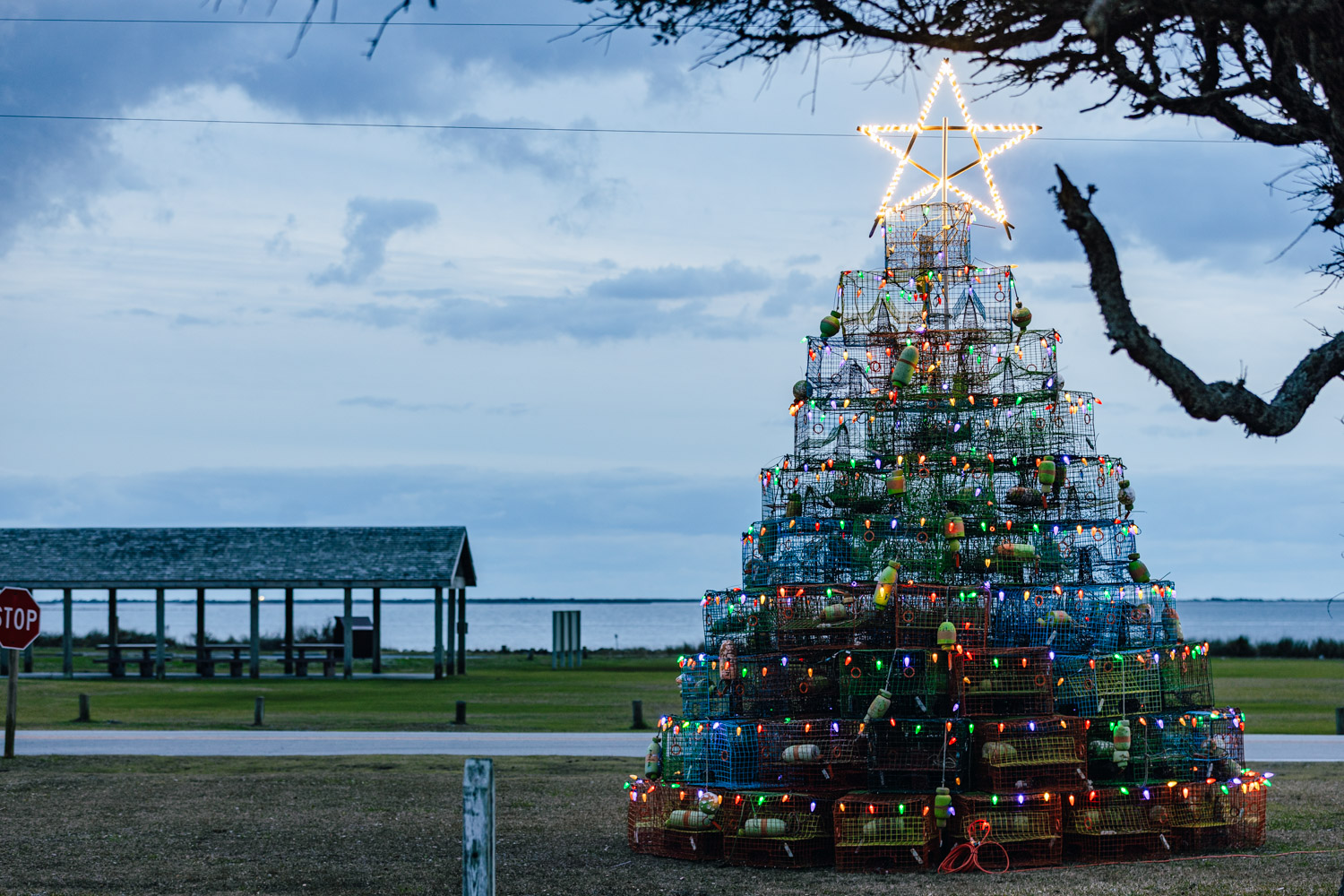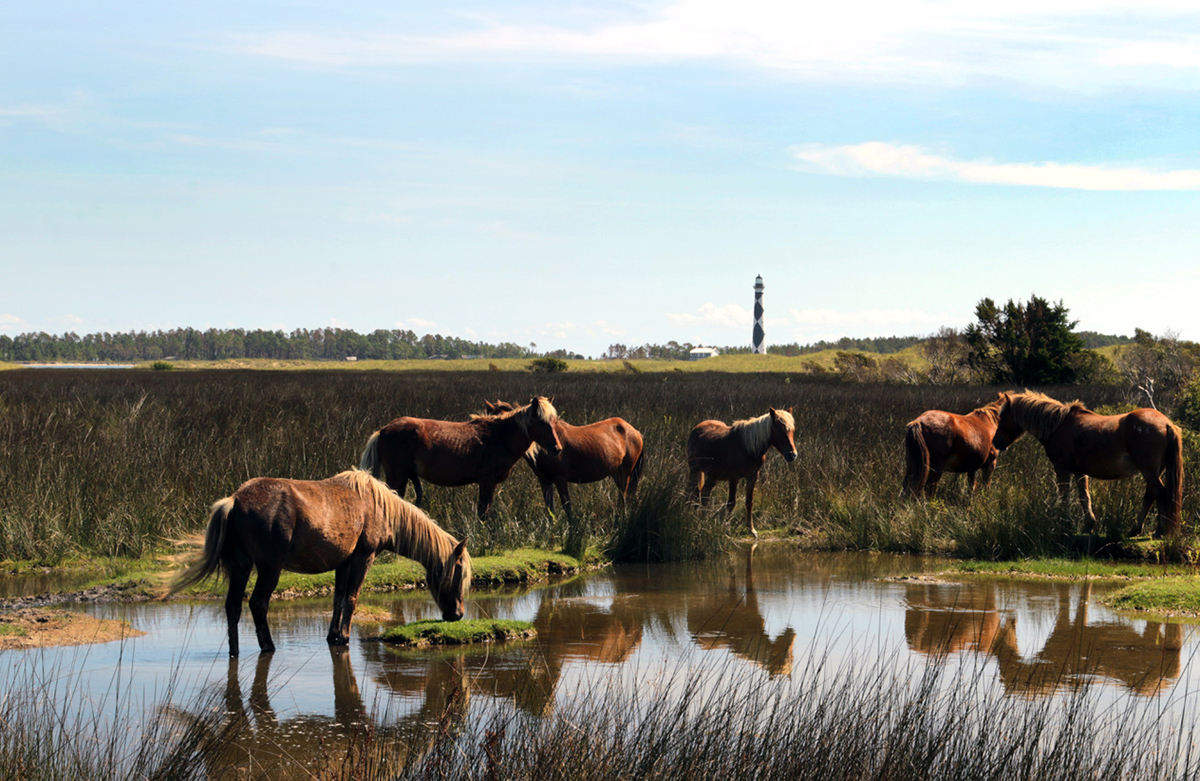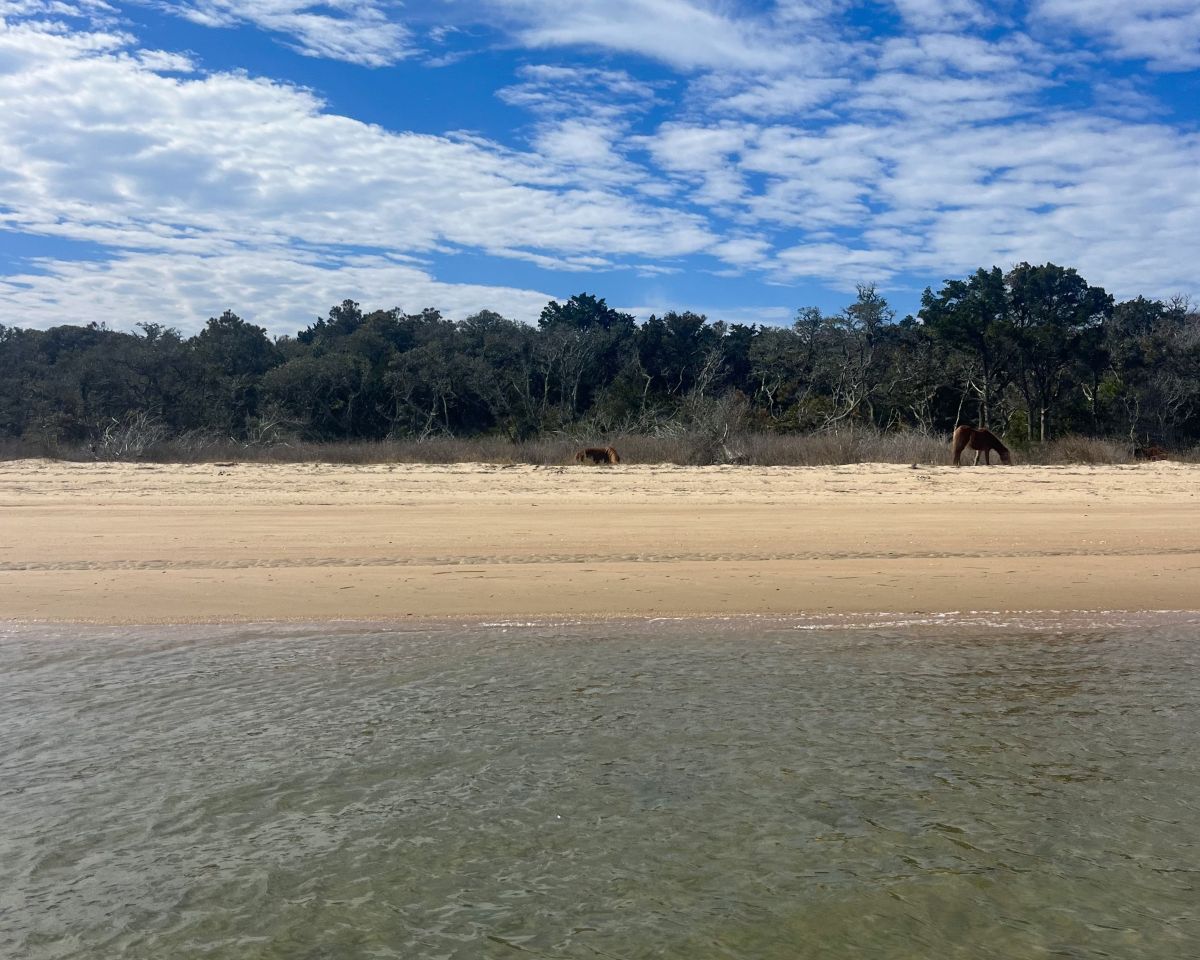
Two University of North Carolina Wilmington professors are collaborating this semester on a documentary celebrating community resilience, adding a new perspective to the overall effort of the Down East Resilience Network.
The network, often referred to as DERN, evolved in the years after Hurricane Florence ravaged coastal North Carolina in September 2018. It’s a project of the Core Sound Waterfowl Museum and Heritage Center on Harkers Island, which was hit particularly hard by the slow-moving Category 1 storm.
Supporter Spotlight
Museum Executive Director Karen Willis Amspacher coordinated the network of government agencies, researchers, residents and nonprofit organizations.
The idea was to connect similar and overlapping research on flooding, saltwater intrusion, infrastructure damage and other risks associated with rising sea levels in the 13 Carteret County communities, and to offer resources to navigate the changes.
“Our DERN partners continue to work in the Down East area with mapping projects, continued flood monitoring, along with journalism and documentary students during spring semester and the 2025 class of interns this summer,” Amspacher told Coastal Review.
The network holds meetings a few times a year to discuss the research and projects that are carried out year-round. The most recent gathering was in late January on Harkers Island.
UNCW’s Jennifer Biddle, associate professor of environmental policy, and Laura Dunn, film studies professor, attended the Jan. 31 meeting — their first.
Supporter Spotlight
Biddle told Coastal Review that she and Dunn attended the meeting to identify how they “could plug in,” and after listening to the research and types of projects, she really appreciated the intention of the network, “to help the local people and local communities adapt to all these changes.”
The next morning, during a roundtable discussion, Biddle and Dunn recognized that their original plan to use a short documentary to help raise awareness had been done.
So, they worked with Amspacher on finding a new perspective, to identify what was missing, “and what was missing is the voice of the future — younger people’s voices. What have they heard and learned from the elders that they want to carry forward? And how do they do that in a changing political and economic society, as well as a changing landscape?”
The documentary became about the community’s resilience. It has “weathered a whole lot of big storms. This is just another big storm,” Biddle said.
The spent February organizing the trip then headed to Down East March 3-7 to film interviews. They stayed in a vacation rental on Harkers Island, where it “was so amazing was to be immersed in the community,” and the week provided a chance for the students to bond and meet people, Biddle said.
The 10 students divvied up into three teams. “We affectionately called them Nature, Culture and Resilience,” Biddle said.
The Resilience crew focused on what’s happening in the area, and how the people are resilient, with a focus on the Core Sound museum.
“The museum itself is a kind of hub of social activity,” Biddle said, adding that one morning there they had seen preschoolers learn about commercial and recreational fishing.
While observing a high school shop class build a skiff, Biddle said they asked the students what they saw for themselves for the future.
“They all had an answer. A lot of it was things they wanted to do, but maybe couldn’t do full time, like shrimping and building boats, because there wasn’t a lot of money there.”
Some said they wanted to work at Marine Corps Air Station Cherry Point and shrimp in the summers, or be a chef and build boats on the side. “They had these cool, but very realistic plans in terms of how they could make a livelihood,” she said.
On the Nature crew’s first day filming, Biddle said they stumbled upon an oyster farmer who had just pulled in bushels of oysters. He explained how he had grown the oysters, and then opened up a few. “We all got to cheers over half-shells that were really delicious.”
Residents and transportation officials talked to the students about the status of the roads, and a scientist gave an interview about visible signs of change, such as ghost forests and marsh migration, Biddle added.
The students met a father-son team and mother-daughter team of decoy carvers. Witnessing the “passing on of these beautiful traditions and the bonds it builds was really touching.”
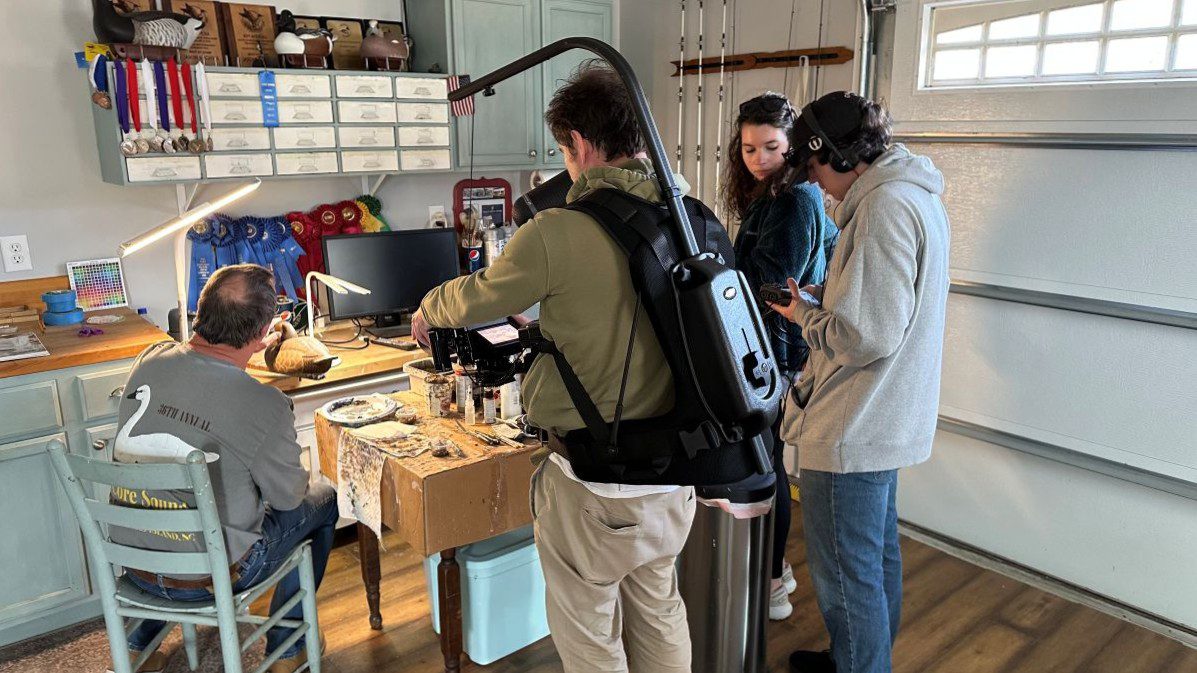
Biddle said she joined the Culture crew for an interview with a shrimper and his daughter. The old-timer had described how his kin dated back to the 1700s in Carteret County and are a multigeneration commercial fishing family.
“What was really cool, especially for my policy students to hear, was he described how they self-regulated,” Biddle said. “Up until the ’80s, they were self-regulating their catches” by being assigned a night to catch certain fish, and the fish houses would only buy so much.
The man’s daughter had spoken “eloquently but passionately about her love of gigging flounder and how she would go out at night with her sister to spend time together and how impactful the moratorium” on flounder fishing has been, Biddle said. The state has limited or canceled flounder season altogether over the last few years because of overfishing and being overfished.
Seeing how policy affects people is why she takes students out in the field, to witness how rules can have unintended consequences, especially to those being the most impacted, she said.
Coastal and ocean policy graduate student Kennedy Huntsman is part of the documentary team who visited Down East. She said that policy and documentary film “share intrinsic goals.”
They “both serve as powerful tools for translating complex issues, like science, into accessible and meaningful information for the public. But effective science communication requires a deep understanding of the intended audience. Too often, the communities most impacted by these issues are left out of the conversation, their perspectives overlooked,” she said.
Being able to put this into practice Down East “was an invaluable experience, one that simply couldn’t be replicated in a classroom,” Huntsman said.
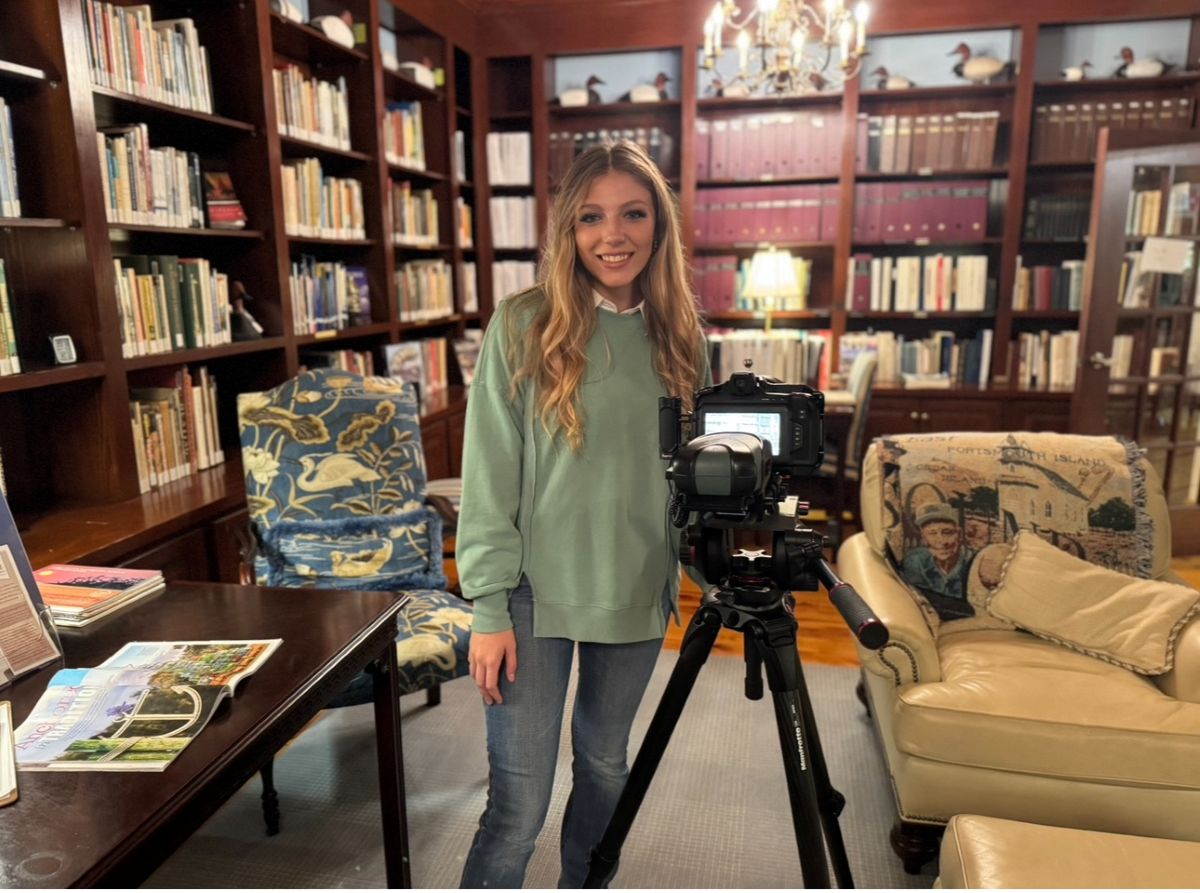
Abigail Schindler, a senior in the film studies department, said her favorite moment Down East was the boat ride on the last day of filming.
“This was a truly unique and impressive group of people who love the place they live,” she said, adding they had seen the wild horses, “which was such a cool experience.”
Her biggest takeaway from the experience was understanding why the people Down East love their home so much.
“It’s not just about one thing — family, nature, tradition — it’s everything combined about the place. I heard the phrase ‘why would I want to live anywhere else’ several times and by my last day I finally understood. It’s a place with so much natural beauty and land without hotels and chain restaurants covering its landscape,” Schindler said.
The next step for the documentary is to edit.
“We have probably 150 hours of footage,” Biddle said.
The documentary will likely be a series of vignettes focusing on commercial fishing, boatbuilding and decoy carving. The plan is to give the recordings back to the community and the documentary will be available to the museum.
The project is funded through the Seahawks Advancing Interdisciplinary Learning, or SAIL, program to integrate policy-rich content into short documentary films to help educate and raise awareness about the threats facing coastal communities and what can be done to help them adapt.
Another new face at the Jan. 31 meeting was Jenny Adler, who was getting ready for a stint as a visiting professor at the Duke University Marine Lab on in Pivers Island in Beaufort.
“Having never lived in North Carolina, I knew I had a lot to learn before teaching a course in Science Journalism at the Duke Marine Lab this spring,” Adler explained. “I felt confident I could teach the journalism part of the course and help students report on science, but it was unsettling moving to a place where I had no community connections.”
While writing a grant proposal to fund the students’ stories, she said she came across a ton of coverage in Coastal Review and also quite a few pieces by visual creator Ryan Stancil and photographer Baxter Miller, who are both members of the network and have worked extensively Down East.
Adler said she contacted the two, who then told her about the network meeting.
“So, a week before I started teaching, I drove to Harkers Island from Massachusetts and walked into a meeting where I knew nobody,” she said, and the next eight hours “were informative and inspiring.”
She said the connections she made that day held strong.
“Karen (Amspacher) and several other members I met that day have spoken with my class, been interviewed by my students, shared local knowledge, and provided guidance and stories that have made training the next generation of journalists in a new place such an incredible experience,” Adler said.
Haven Cashwell, a postdoctoral research scholar for the State Climate Office at North Carolina State University, has been coordinating communications for the network.
Over the last few months, she and other members have been working on a website. It wasn’t quite ready at publication, but those attending the Jan. 31 meeting had a sneak peek.
“The goal of the website is to have a place where community members and those interested in the Down East Resilience Network can access information about areas of concern,” which include saltwater intrusion and sunny day flooding, Cashwell said in an interview.
Plans for the website include providing resources, such as how to navigate Federal Emergency Management Agency, raising your home, obtaining a fortified roof, and updates about the network.
“We are currently asking researchers about information they think should be included on this website that community members should know about. We hope this will be used in the future by both community members and DERN members,” Cashwell said.
Dr. Kiera O’Donnell, another member of the network, is a postdoctoral associate at Duke University and is working on a study to better understand coastal water quality concerns in North Carolina.
Residents are being asked to fill out a survey “to help us understand the water quality concerns for surface and ground water throughout Carteret County. We are currently taking surface water quality samples to get a snapshot of the water quality throughout Down East and the surrounding areas,” O’Donnell said. “But we are looking for local perspectives and water quality concerns to help inform us about the current issues locals are dealing with and what they care about when it comes to water quality.”

